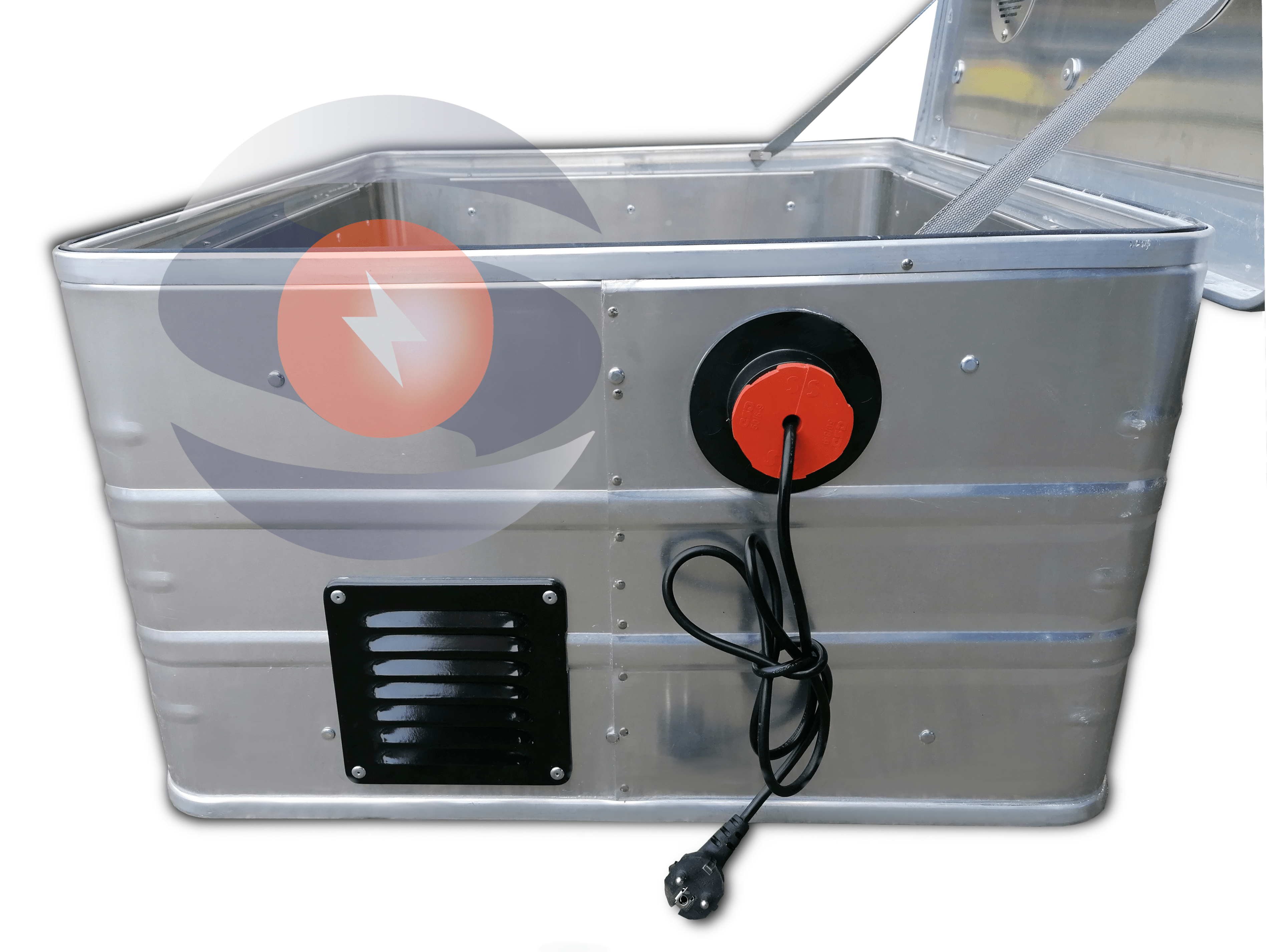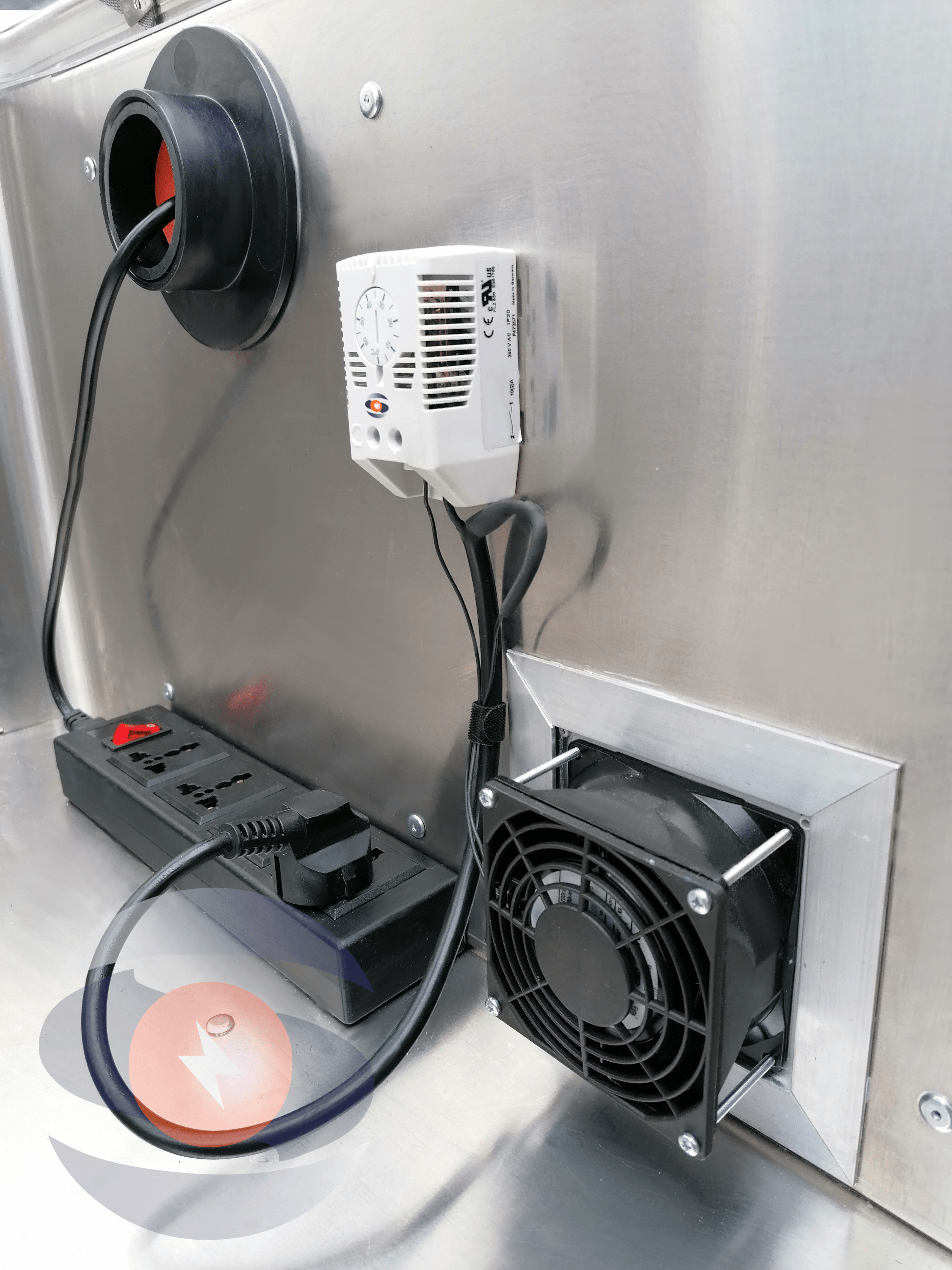Technical features
The LithiumSafe™ Battery Box is designed for safely storing, charging and transporting lithium ion batteries. The most intensively tested battery fire containment solution on the market, engineered to fight all thermal runaway problems:
Containment of fire and explosion
Thermally insulating extremely high temperatures
Filtration of toxic fumes

Fire containment
The behaviour of a lithium battery fire can never be predicted. It heavily depends on the multiple parameters, such as the capacity (Wh), the state of charge, the chemistry of the cell, the shape and size of the battery and the type of casing. For this reason it is very important that lithium battery safety systems are tested intensively, much more than other conventional industrial fire protection systems.
Our LithiumSafe™ Battery Box has successfully been tested on fire containment of multiple lithium ion batteries having different high capacities and cell chemistries. More than 20 official fire tests have been performed, both in our own fire test facility and at external third party laboratories.
Explosion proof
When a lithium ion battery goes into thermal runaway, a high volume of highly flammable gas is produced. This gas must be vented to the outside to prevent the pressure inside the box from building up and causing it to explode.
In our tests, we measured extremely high pressures in some cases, ranging from 1 to 5 bar. The gas is discharged quickly and in a controlled manner through the vents which are incorporated in the lid of the box, containing our special self-developed LithiumSafe™ Filters.
One of the challenges in designing our box was to provide high mechanical strength without having to use heavy steel reinforcements to keep the box light and compact. We eventually arrived at a very strong double wall aluminium construction that retains complete integrity when exposed to a thermal runaway explosion.
In our tests, we measured extremely high pressures in some cases, ranging from 1 to 5 bar. The gas is discharged quickly and in a controlled manner through the vents which are incorporated in the lid of the box, containing our special self-developed LithiumSafe™ Filters.
One of the challenges in designing our box was to provide high mechanical strength without having to use heavy steel reinforcements to keep the box light and compact. We eventually arrived at a very strong double wall aluminium construction that retains complete integrity when exposed to a thermal runaway explosion.
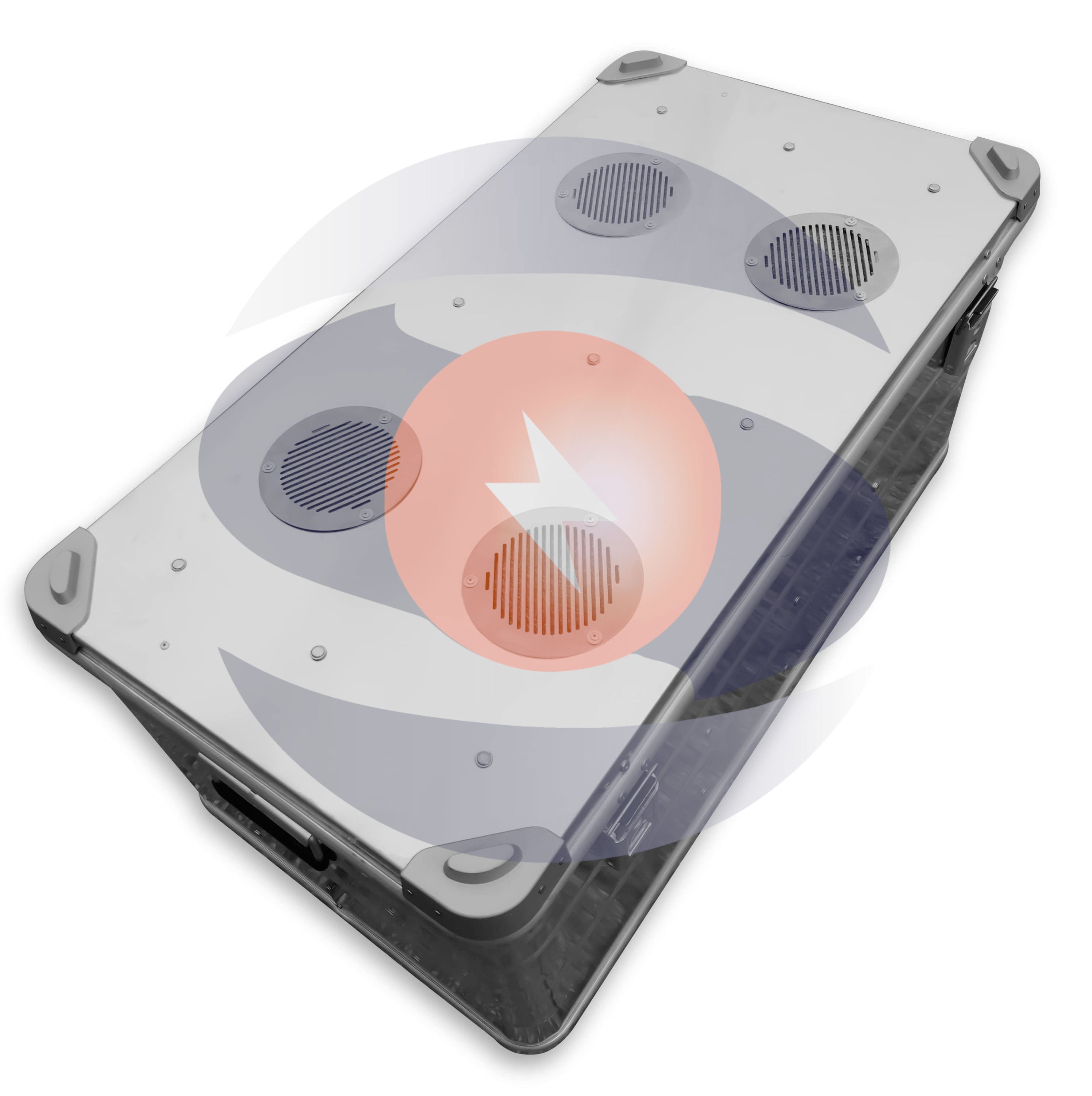
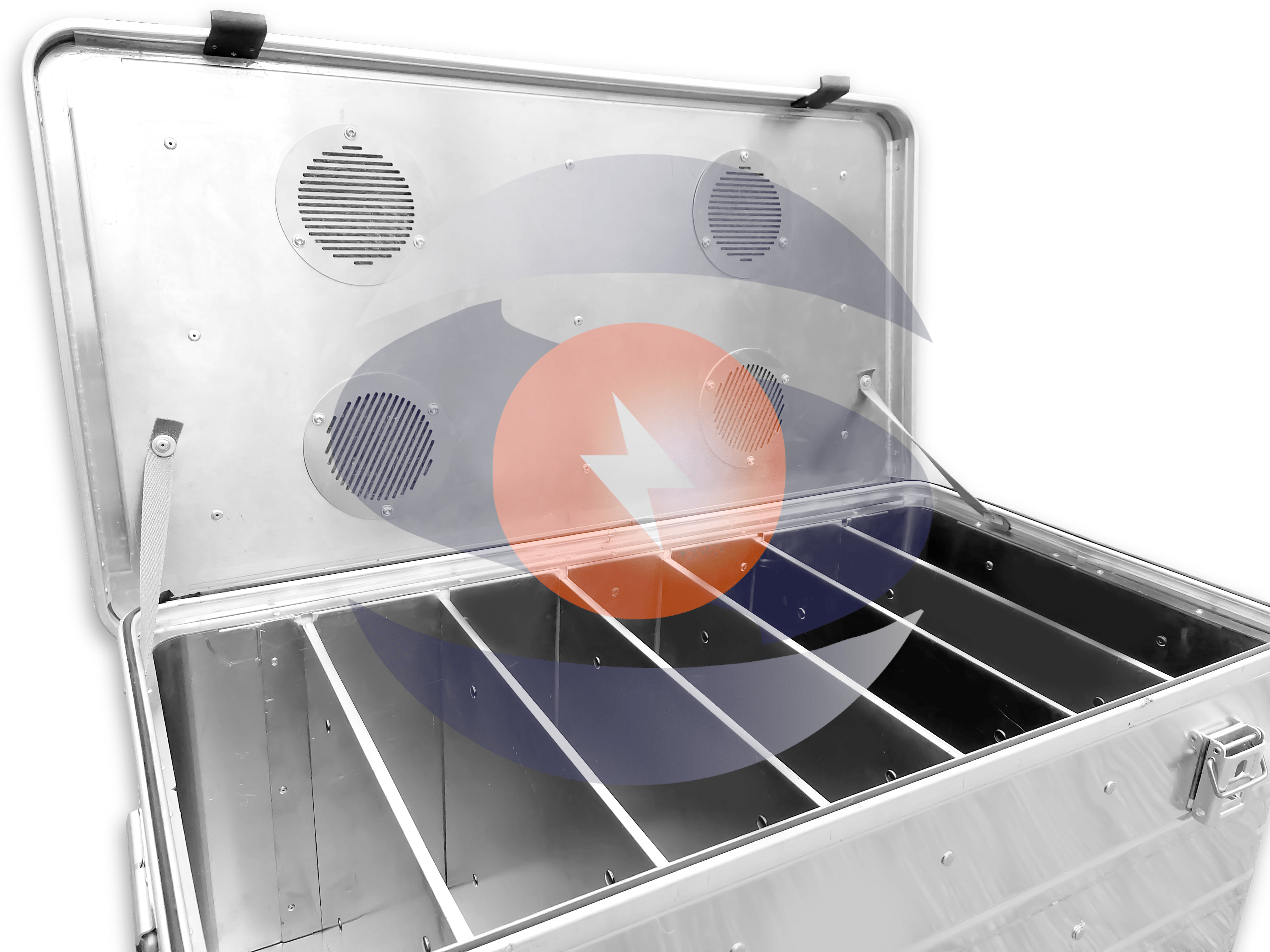
Thermal insulation
Lithium battery fires can reach peak temperatures of 1400 °C. In order to prevent the construction from melting away, the application of high performing insulation materials is therefore necessary.Our box is in fact a box-in-box concept. The box has a double wall, bottom and lid. Lightweight, advanced high-temperature insulation is applied between the aluminium. These insulation materials have an impressively low thermal conductivity coefficient, even at high temperatures up to 1400 C.
This allows high temperatures to be strongly reduced with minimal material thickness.
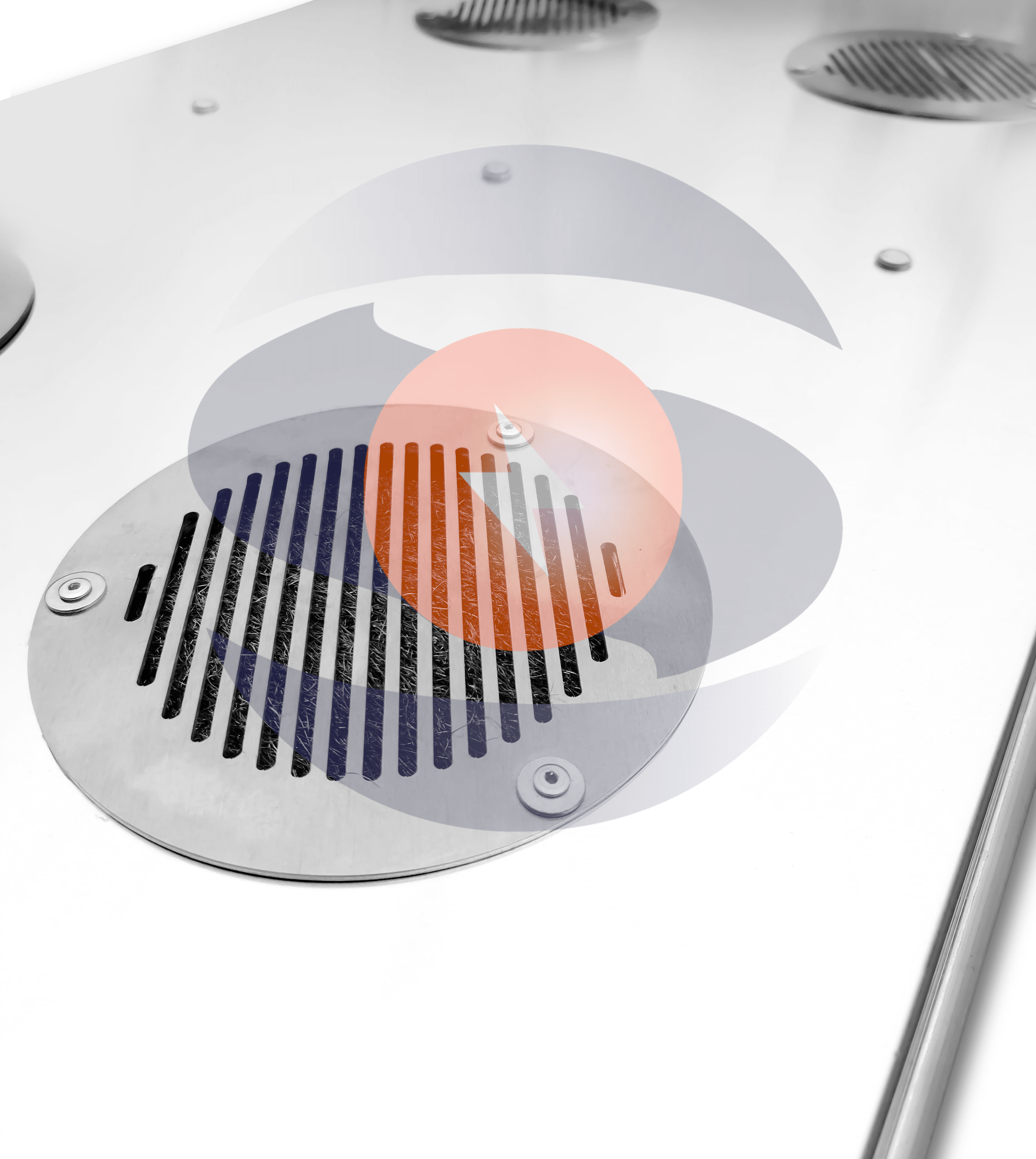
Filtration of toxic fumes
During thermal runaway, a mix of gases are which can contain large amounts of hydrogen fluoride (HF) ranging between 20 and 200 mg/Wh of nominal capacity. Phosphoryl fluoride (POF3), another toxic gas, can also be released in amounts of 15-22 mg/Wh nominal capacity. Fluoride gas emission can pose a serious toxic threat, and therefore it’s essential to limit the release these toxic particles to the outside.Tests have shown that our Filter retains a large part of the harmful gases in its porous structure. The filter is porous and breathable, so the gases can pass through it quickly.
At the same time, it also blocks the penetration of flames. The filters can be reached by unscrewing the ventilation caps on the inside of the lid. A life time of 12 months should be taken into account for the filters. After this, the filters should be renewed.
Charging while storing
It is possible to charge batteries while safely stored inside the box. This is done by using our LithiumSafe™ Cable Entry Plug. This is a 240 minute fire-resistant certified plug that prevents fire penetration via the charging cable in case of thermal runaway.

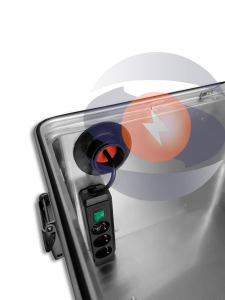
The cable of a power distribution unit is fed through the Cable Entry Plug. The batteries then go into the box together with the chargers. Inside the box the chargers are connected to the power distribution unit.
If you want to keep the chargers of the batteries outside the box, for example to save space, this can be arranged. We will ask you how many charging cables/chargers are involved and what the diameter of the cable is. We will then cut the holes in the wall of the box, and supply the Cable Entry Plugs in the right size. You can then assemble these yourself using a simple step-by-step manual.
If you want to keep the chargers of the batteries outside the box, for example to save space, this can be arranged. We will ask you how many charging cables/chargers are involved and what the diameter of the cable is. We will then cut the holes in the wall of the box, and supply the Cable Entry Plugs in the right size. You can then assemble these yourself using a simple step-by-step manual.
Cooling
Some batteries produce a lot of heat when charging. In some cases, the ventilation grilles in the lid offer insufficient airflow. To cool the box, it can be fitted with a ventilator having an air circulation capacity of 15 - 18 m3/hr.The max. permitted interior temperature at which the fan must start can be set by means of a thermostat.
